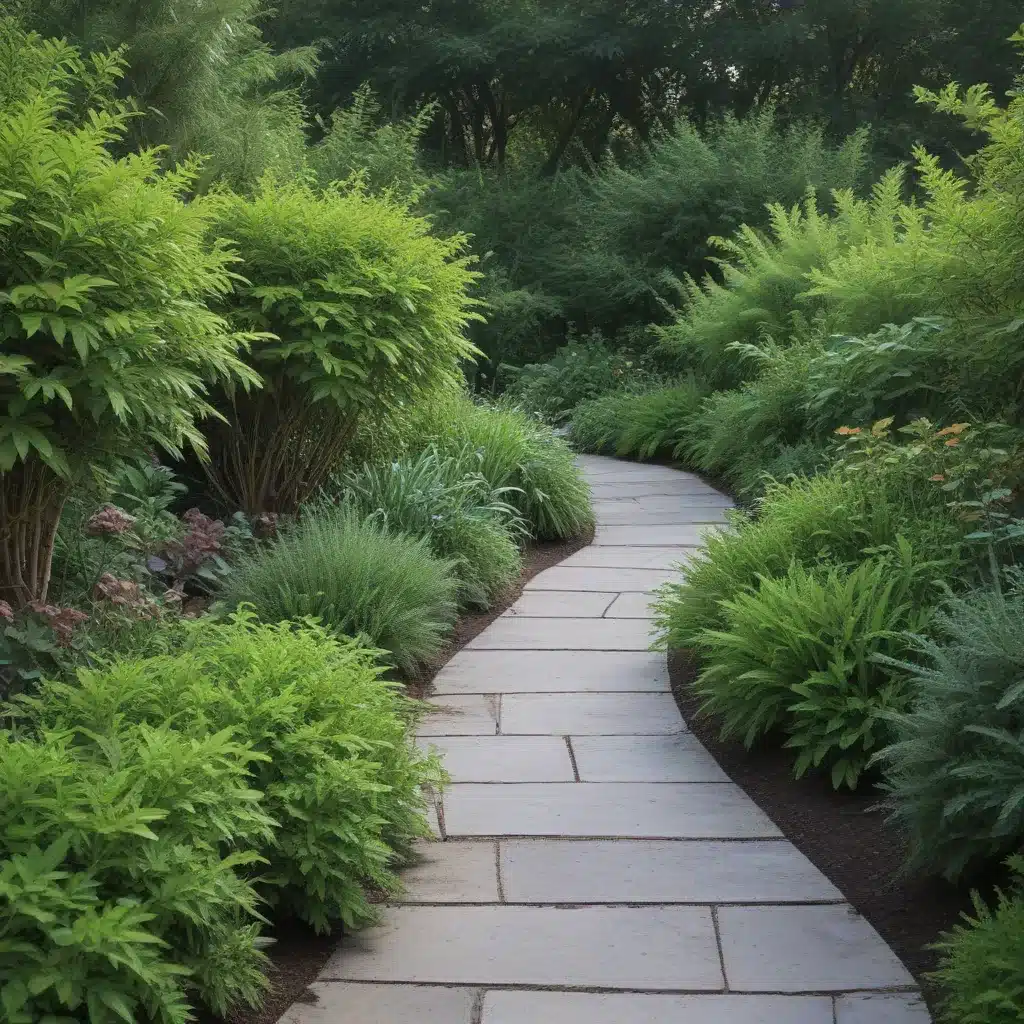Unlocking the Secret to Magazine-Worthy Gardens
You know those jaw-droppingly beautiful gardens you see in magazines and on Instagram? The ones that make you sigh and wonder, “How do they do that?” Well, my friend, the secret lies in the art of landscape layering.
I’ll admit, when I first started working on my own garden, I struggled for years to figure out how to create that lush, cohesive look. I’d squint my eyes, trying to dissect the elements, but nothing seemed to work. It wasn’t until I discovered the power of layering that everything clicked.
Landscape layering is all about arranging your plants in a strategic way to create depth, dimension, and visual interest. It’s not just about plunking down a few shrubs and calling it a day. No, no, no. This is about mastering the art of repetition, scale, flow, and, most importantly, depth.
The Garden Pyramid: Your Key to Layered Perfection
Think of your garden like a pyramid. At the top, you’ve got your towering trees, followed by a layer of evergreen shrubs, then deciduous shrubs, perennials, and finally, your ground covers and vines. Each layer is essential, and the key is to make sure you’ve got the right balance of each.
As the experts at Pretty Purple Door explain, “If you start at the tippy-top with 1 tree and 3 evergreen shrubs, how many deciduous shrubs would you need? Obviously more than 3 right? As you work down the pyramid, you should include more and more of each type of planting.”
Repetition: The Glue That Holds It All Together
One of the secrets to successful landscape layering is repetition. By repeating the same plants, colors, or even textures throughout your garden, you create a sense of cohesion and flow. It’s like a visual cue that says, “Yes, this all belongs together.”
As the team at Pretty Purple Door points out, “Repetition can be created by repeating a specific plant, a specific color, or a specific plant feature. When you repeat plants, colors, or features, it gives your garden a more cohesive feel.”
Scale: Finding the Perfect Plant Fit
But it’s not just about repetition, my friends. Scale is equally important. You need to make sure your plants are the right size for the space you’re working with. Cramming in too many plants will just create an overgrown mess, while spacing them too far apart will make your garden feel sparse and disconnected.
As the experts explain, “It’s important to use large enough or small enough plantings for the space you are putting them in. Don’t shove stuff into every crack and crevice like I did. You’ll end up with an overgrown mess. But don’t space your plants too far apart either. Your plants should touch each other to create a lush border.”
Creating Flow: Tying It All Together
Now, let’s talk about flow. Your garden shouldn’t be a series of disjointed zones or islands. Instead, it should feel like a cohesive, well-planned space that draws the eye from one area to the next.
As the team at Pretty Purple Door suggests, “Try to resist the urge to create tiny zones that are spotted throughout your lawn. Instead, encompass landscape elements into garden beds. This example has a much better flow, and the scale of the gardens to the rest of the property is much more balanced.”
The Crowning Jewel: Depth
But the true secret to a magazine-worthy garden? Depth. This is where the magic happens, my friends. By arranging your plants in a way that creates a foreground, middle-ground, and background, you add a sense of dimension and richness that will leave your neighbors green with envy.
As the experts at Pretty Purple Door explain, “Arranging your plants forward and behind one another is what will make your landscape feel cohesive and lush. This involves creating large garden beds, larger than you’re probably used to, so that you can incorporate a foreground, middle-ground, and background layer.”
Putting It All Together
Now, I know what you’re thinking: “This all sounds great, but how do I actually put it into practice?” Fear not, my friend. With a little planning and some good old-fashioned elbow grease, you can transform your garden into a veritable oasis.
Start by taking a look at your space and assessing what you’ve got. Are you missing any of the layers in the garden pyramid? Is there a lack of balance, like too many evergreens and not enough flowering shrubs? Use that as your starting point.
Then, incorporate the principles of repetition, scale, flow, and depth. Repeat your plants, colors, and textures to create unity. Make sure your plants are the right size for the space. Expand your garden beds to create that sense of depth and dimension. And don’t be afraid to get a little creative – mix and match, play with textures, and let your personality shine through.
Before you know it, you’ll be the envy of the neighborhood, with a garden that looks like it’s straight out of a magazine. And the best part? A1 Landscape Construction in Temecula, California can help you make it happen. So why not give them a call and let the magic of layered plantings transform your outdoor space?




